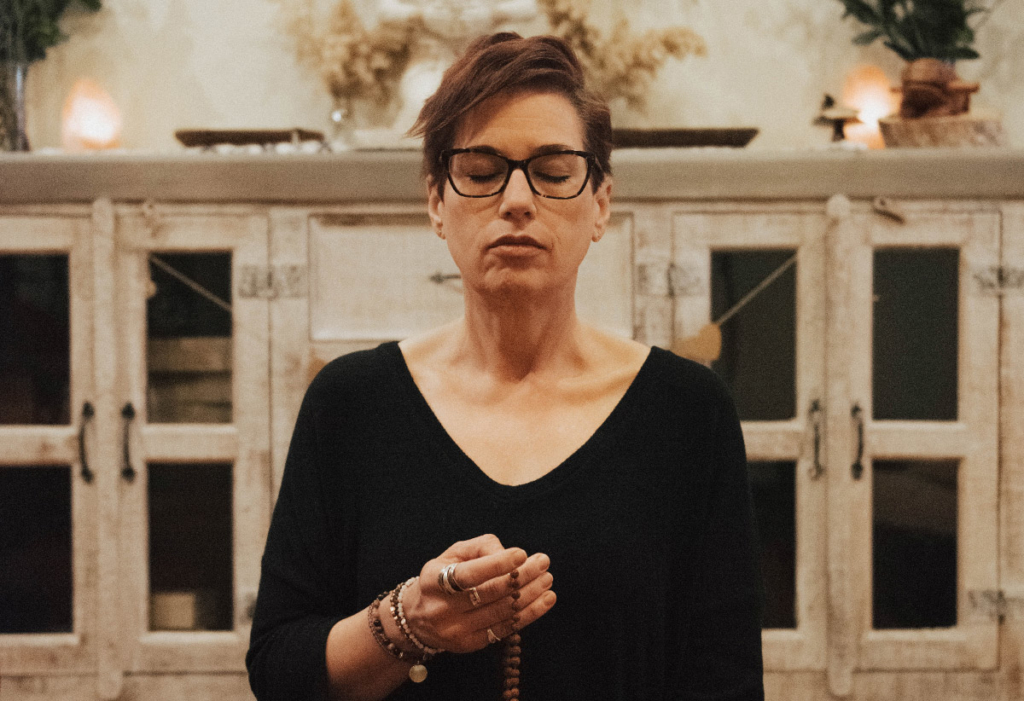
Scientific studies have shown that meditation has many benefits—calming the mind and body, promoting general wellbeing, even increasing brain cells in certain areas of the brain. But is there a relationship between meditation and creativity? If so, how does that work?
If you’ve ever tried to sit down and meditate, you’ve likely gotten a glimpse into an enduring truth: our minds are often in a state of chaos. People often blame meditation itself. Students often tell me that their minds are peaceful and calm until they sit down to meditate.
The truth is that meditation doesn’t make our minds suddenly become more active. They’re always that way. Meditation just gives us a window into what’s already there. Seeing this is an important insight.
In my 30-plus years of mindfulness practice, I’ve noticed another phenomenon. Much of my mind’s chatter is the same old stuff, cycling through again and again. This includes familiar memories, worries, reveries, grievances, etc.
This brings up the question: how productive is it to continually recycle the same thoughts? Unless I somehow come up with a creative solution to an age-old issue that I’ve already worked through a thousand times, it seems like a pretty major waste of mind-space to keep going over the same thoughts ad infinitum.
Out with the Old, In with the New: Meditation and Creativity
Our habits have momentum. When we develop any sort of habit, including habits of thought, it’s very easy to default to those habits. Defaulting to our habits is way easier than shifting momentum and changing them. This is where mindfulness comes in.
When we are mindful of our patterns of thought—healthy and unhealthy—we can choose whether to continue with them, or not. When we start making the choice to stop using up our mental energy on the same old stuff, there’s actually room for new ideas and habits to form.
For example, I loved to write as a child and as a teenager. But for a number of years my inspiration to write dried up and I was both unable to, and uninterested in, rekindling it. When I was in my early 30s, I took a college-level writing course, hoping to reawaken my writing abilities. Right before I started classes, I attended a 10-day Insight meditation retreat. On the retreat, I began to be able to choose, at least sometimes, not to revisit some of my most entrenched thought patterns. This gave way to a sense of spacious awareness that I took home with me.
When I first put pen to paper to write something, words flowed through me in a way I hadn’t experienced for years, maybe ever. Now that I was no longer investing so much energy into tired old thought patterns, there seemed to be space for new, creative ideas to flow.
Meditation and Creativity Practice
For the next month or more, commit to being attentive to your thoughts, as well as your breath and body. Remember that meditation is not about ridding your mind of thinking. It’s about learning how to relate skillfully to whatever is present. That means neither indulging nor pushing away your thoughts. Instead, simply be aware that thinking is occurring.
Note if there are recurring themes in your thinking patterns. You may even want to write down your recurring thoughts in a journal. This may help reinforce your ability to recognize them when they arise.
When you find yourself lost in a familiar thought pattern, ask yourself: is this line of thought productive? Is it leading to any sort of insight? Or am I just mulling over the same old issues in the same way? Then shift your awareness back to your body and your breath. Remember that because your habitual thought patterns have momentum, you may need to extract yourself from them many, many times. But that is the practice. And it’s well worth the effort.
Note: One of the keys to being comfortable in your sitting meditation is to make sure you have the right support. Here’s a post that might help you find the sitting support that’s best for your body.
